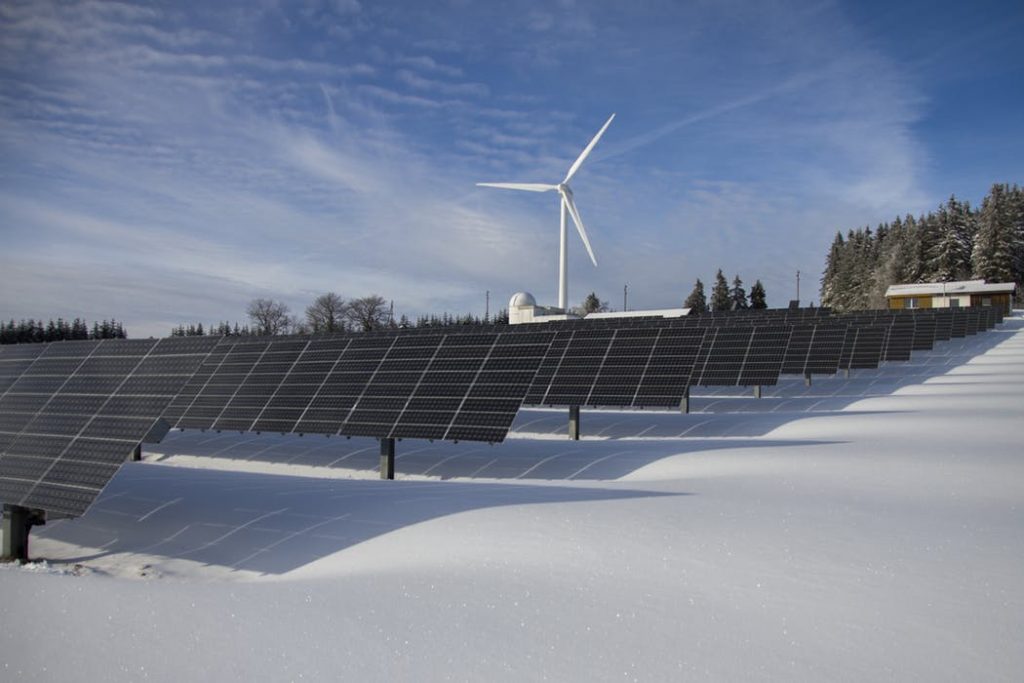The proportion of electricity generated using renewable resources reached 18 percent in 2017, up from 15 percent the year before, and continues to increase today. Much of that energy comes from large facilities owned by utilities, but a significant portion comes from small systems installed at people’s homes. If you’re thinking of getting one of these residential renewable energy systems, you have several options. How do you know which choice is right for you? Let’s look at some of the pros and cons of each type of system.

Residential Solar
Probably the most popular option is residential solar. Technologies for generating solar energy have improved substantially in recent years, and you have numerous options for what you want your solar setup to look like. You can install panels on your roof or create a standalone system on the ground, although rooftop solar is the most common choice. Here are some of the pros and cons of solar.
Pros
- Energy Savings: The amount of money a solar system can save you depends on various factors including your local electricity rates, the size of your system and how much sunlight you get. The typical savings over 20 years range from $10,000 to $30,000. Solar power systems can significantly reduce or even eliminate your electricity bill.
- Energy Efficiency: Solar technology has become much more efficient in recent years. Today, most panels have an efficiency rating of between 11 and 15 percent. This is a booming industry – so you’re guaranteed to secure a reliable, eco-friendly energy company. You can also access the solar energy system through Palmetto, who provides comprehensive energy solutions for homeowners who want to save time, money, and resources without the risk or hassle.
- Can Improve the Value of Your Home: Installing solar panels on your home can increase its property value, providing a return on investment even if you decide to move. Consulting a California solar company can help you understand the long-term financial and environmental benefits of adding solar to your property.
Cons
- Variable Energy Production: The amount of electricity your solar system produces depends on how much sunlight it gets. That means it won’t generate electricity at night or on days that aren’t sunny. Make sure you get enough sunlight on a regular basis to justify installing a solar setup. One way to deal with this drawback is to install a battery, which can store energy produced by your solar panels for later use.
- Installation Costs: Installing a solar system does require a significant upfront investment. Use financing options such as state-backed loans and grants, power purchase agreements and leases to your advantage to help reduce costs.
- Doesn’t Work for Every Location: Solar doesn’t work for every home since it requires that your panels have consistent access to sunlight.
Residential Wind
Another less common option is residential wind power. A growing number of people are installing small wind turbines on their property to help power their homes. Could residential wind power be right for you?
Pros
- Energy Savings: A residential wind turbine can significantly reduce your electricity bill and will likely pay for itself over a number of years. Exactly how much you save will vary depending on the price of electricity in your area, the speed and frequency of the wind and other factors. A five-kilowatt turbine will pay for itself in an estimated 15 years.
Cons
- Variable Energy Production: Your wind turbine will only produce electricity when the wind is blowing, so you’ll have to supplement with power from other sources. Like with solar, a battery system can help make up for this drawback.
- Doesn’t Work For Every Location: For a wind turbine to be worth it, you need consistent wind. You also need enough space to install a wind turbine and local laws that allow you to build one.
Residential Hydropower
If you have water flowing on your property, you may be able to install a microhydropower system. These systems can generate between 10 and 100 kilowatts of electricity, enough to power a home. You can produce hydropower with as little as 13 inches of water and a vertical drop as small as two feet.
Pros
- Can Be Continuous: Although the amount of energy produced may vary, a microhydropower system can provide continuous energy production as long as you have a body of water with constant flow.
- Relatively Low-Cost and Low-Maintenance: Building a home hydropower system can cost as little as $1,000 and won’t cost more than $20,000. These systems are also relatively low-maintenance, which helps you recoup your investment quickly.
Cons
- Very Location-Dependent: Microhydropower systems require a very particular set of circumstances. Most homeowners’ properties won’t have the necessary attributes. Even for some that do have flowing water on their property, the available energy may still be relatively little.
If you’re considering residential renewable energy, you have quite a few options. The above information can help, but you may want to consult with a professional before making a final decision. Whatever your situation, though, you can likely find an option that will work for you.





Leave a Comment